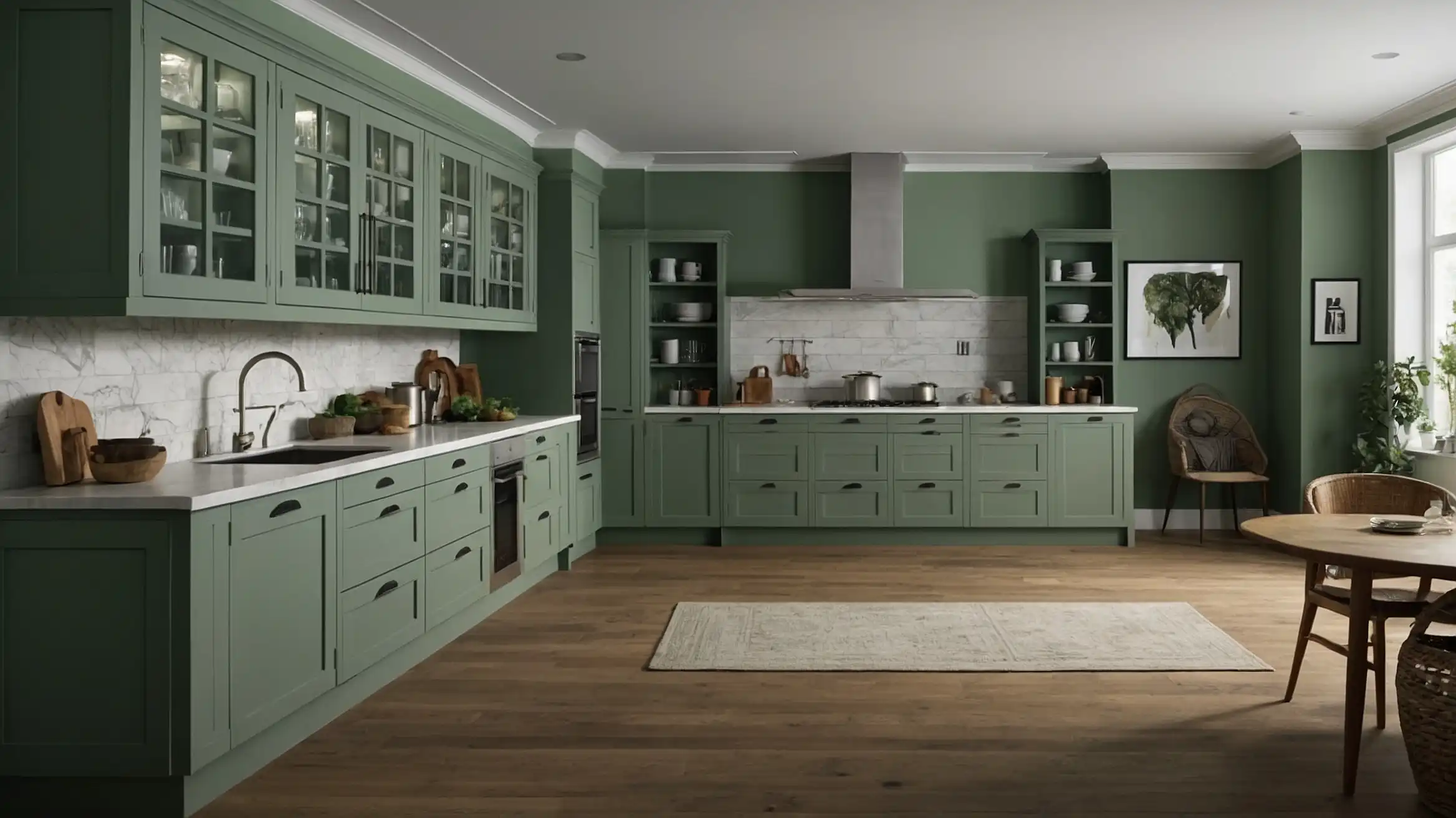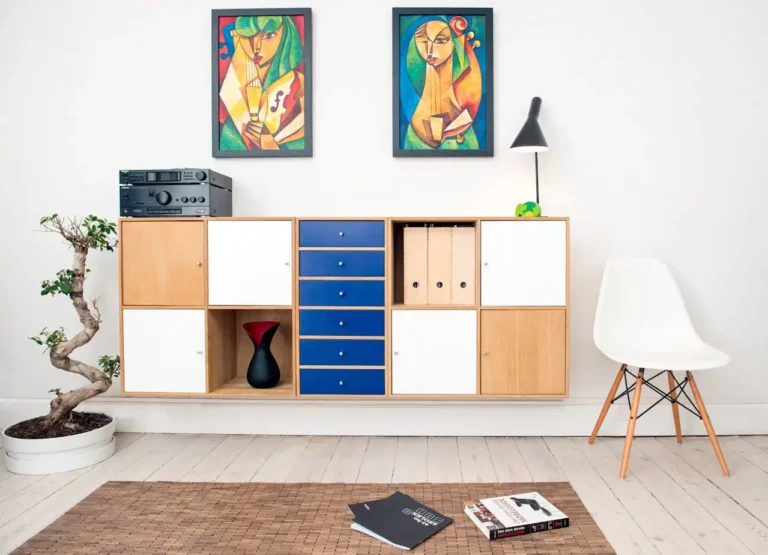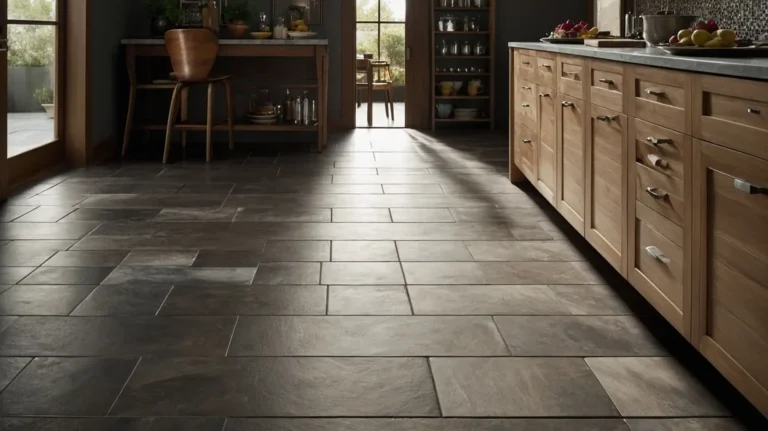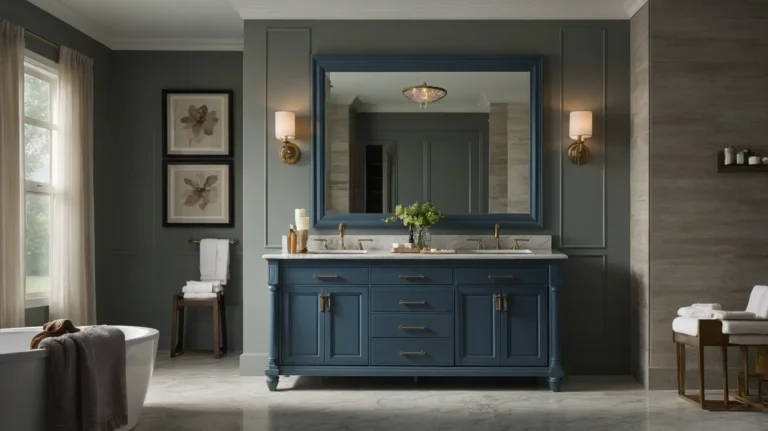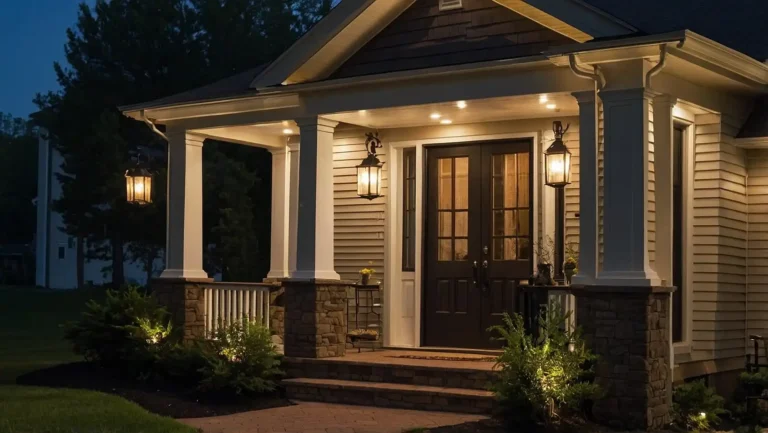27 Stunning Sage Green Kitchen Ideas to Transform Your Space
Sage green brings a soothing, nature-inspired element to kitchens that balances perfectly between statement-making and timeless.
This versatile hue works with virtually any kitchen style, from farmhouse to modern minimalist.
The color’s subtle undertones shift beautifully throughout the day, reflecting natural light in morning and creating a cozy atmosphere by evening.
Whether you’re planning a complete kitchen renovation or looking for simple updates, these sage green ideas will help you incorporate this trending color into your culinary space.
1: Sage Green Cabinetry

Transform your kitchen with full sage green cabinetry for a bold yet soothing statement.
This comprehensive approach creates a cohesive look that feels both distinctive and timeless.
Pair with brass or black hardware for contrast that pops against the muted background.
The color works especially well in spaces with abundant natural light.
Consider varying the shade slightly between upper and lower cabinets for subtle dimension.
2: Sage and White Two-Tone

Create dynamic contrast by painting lower cabinets sage green while keeping uppers bright white.
This balanced approach introduces color without overwhelming your space.
The darker base anchors the room while white upper cabinets maintain an airy feeling.
This combination works particularly well in smaller kitchens that benefit from the openness of white.
Add wood accents to warm up this cool-toned palette.
3: Sage Green Island

Make your kitchen island a focal point by painting it sage green while keeping perimeter cabinets neutral.
This targeted approach adds color without committing to a fully green kitchen.
Choose a slightly deeper sage tone than you might use for all cabinetry. The isolated color creates a furniture-like quality that elevates the island’s importance.
This approach offers flexibility to change your color scheme more easily in the future.
4: Sage Green Backsplash

Install a sage green tile backsplash against white or wood cabinetry for a refreshing pop of color.
Options range from handmade ceramic subway tiles to geometric cement patterns.
The vertical surface adds color at eye level without affecting cabinet brightness. Consider tiles with slight variations in tone for added depth and interest.
This defined color area creates a focal point while being relatively easy to update later.
5: Sage Accent Wall

Paint a single kitchen wall in sage green to create a distinctive backdrop for open shelving or your range area.
This simple update delivers significant impact with minimal investment.
The color adds depth that makes white cabinetry or trim appear crisper by contrast. Consider carrying the color to adjacent nooks or dining areas for visual flow.
This approach works well in rental properties where permanent changes might not be possible.
6: Sage Green Appliances

Invest in sage green appliances for a unique alternative to standard stainless steel. Major manufacturers now offer refrigerators, ranges, and dishwashers in this trending color.
The muted tone feels both contemporary and timeless. Pair with neutral cabinetry to let the colorful appliances become focal points.
This substantial commitment creates a distinctive kitchen identity that stands out from the ordinary.
7: Sage and Natural Wood

Combine sage green elements with warm wood tones for an organic, nature-inspired kitchen. The warmth of natural wood balances sage’s cooler undertones perfectly.
Incorporate wood through open shelving, countertops, or furniture-style cabinet details.
The contrast between the two materials adds visual richness without requiring additional colors.
This pairing works particularly well in kitchens with access to natural light.
8: Sage Green Countertops

Install sage green quartz or concrete countertops for an unexpected twist on traditional surfaces. This application introduces color in a durable, functional plane.
The horizontal color placement anchors the space visually. Pair with neutral cabinetry to let the distinctive counters take center stage.
Consider continuing the material as a backsplash for dramatic vertical impact.
9: Sage Green Open Shelving

Replace upper cabinets with sage green open shelving for a lighter, more spacious feeling.
Paint simple floating shelves or choose metal brackets with sage green shelves for contrast.
Display white dishes and clear glassware against the colored background for striking effect. The open concept creates display opportunities while maintaining the color story.
This approach combines practical storage with decorative impact.
10: Sage Green Ceiling

Paint your kitchen ceiling sage green for an unexpected color element that draws the eye upward.
This surprising application creates architectural interest in otherwise standard spaces.
Keep walls and cabinetry light to balance the overhead color.
The ceiling color creates an intimate feeling while defining the kitchen zone in open-concept homes.
This distinctive choice adds character without affecting valuable wall or cabinet space.
11: Sage Green Pantry Door

Transform your pantry door with sage green paint for a focused color accent.
Choose a slightly deeper sage tone than you might use for larger applications to create emphasis.
Add interesting hardware that contrasts with the green for additional detail. Consider painting the pantry interior the same color for a cohesive, intentional look.
This small-scale application adds personality without overwhelming your space.
12: Sage Green Window Frames

Paint kitchen window frames sage green to create natural focal points that direct attention to outdoor views.
This architectural detail adds color in a structured, intentional way.
The defined color outlines enhance window proportions and architectural details.
Consider extending the color to window sills for a complete treatment.
This application connects interior color schemes with garden views for visual harmony.
13: Sage and Brass Combination

Pair sage green elements with warm brass fixtures and hardware. The metallic warmth beautifully complements sage’s cool undertones for perfect balance.
Choose aged or brushed brass for a subtle effect or polished brass for more drama.
Extend the metallic finish to lighting fixtures and cabinet hardware for cohesion.
This classic combination feels both traditional and fresh simultaneously.
14: Sage Green Range Hood

Make your range hood a statement piece by cladding or painting it sage green.
This central kitchen feature becomes a focal point when highlighted with distinctive color.
Choose a slightly deeper sage tone than surrounding elements to create emphasis.
Consider adding brass strapping or trim details for additional character.
This targeted color placement creates impact in the cook space specifically.
15: Sage Green Furniture

Incorporate sage green through movable furniture pieces like islands, bar stools, or banquettes.
This approach adds color without permanent commitment to built-in elements.
Choose different shades of sage across various pieces for layered interest. The furniture-based color creates flexibility to rearrange or update as needed.
This method works especially well in rental properties or for those who like to refresh their space frequently.
16: Sage and Marble

Combine sage green cabinetry with white marble countertops or backsplashes for timeless elegance.
The natural stone’s veining often contains subtle green tones that complement sage beautifully.
The high contrast between deep cabinets and bright stone creates dynamic visual interest. Consider honed rather than polished marble for a more subdued, organic look.
This pairing works in traditional, transitional, and contemporary kitchen styles.
17: Sage Green Flooring

Install sage green floor tiles in ceramic, cement, or natural stone. This unexpected application anchors your kitchen with distinctive color from the ground up.
Choose subtle patterns or textural variations to add depth while maintaining the color focus.
Pair with neutral cabinetry and walls to balance the colorful foundation.
This dramatic choice creates a memorable kitchen while keeping upper spaces light and bright.
18: Sage Green Dishware Display

Collect and display sage green ceramic plates, bowls, and servingware on open shelving or glass-front cabinets.
This low-commitment approach introduces the color through accessible accessories.
Mix various shades and textures of green ceramics for collected appeal.
The displayed items add color while remaining functional for everyday use.
This approach allows you to incorporate the trend without any construction or permanent changes.
19: Sage Green Kitchen Textiles

Add sage green through fabric elements like window treatments, chair cushions, and tea towels. These soft accessories introduce color in easily changeable ways.
Choose different patterns and textures within the sage family for layered interest.
The textiles soften the kitchen’s hard surfaces while adding color strategically.
This budget-friendly approach allows seasonal updates without significant investment.
20: Sage and Black Contrast

Create dramatic tension by pairing sage green with matte black accents.
Black light fixtures, hardware, or appliances pop dramatically against the muted green background.
The high-contrast combination feels both modern and timeless.
Consider black metal open shelving against sage walls for architecturally interesting storage.
This bold pairing works especially well in contemporary and industrial-inspired kitchens.
21: Sage Green Pendant Lighting

Hang sage green pendant lights above islands or dining areas to introduce the color at eye level.
Ceramic, metal, or glass fixtures in this hue create focused color statements.
Position lights to create pools of illumination over work and gathering zones.
The colored fixtures become jewelry-like elements that catch attention during day and night.
This targeted application adds color without affecting cabinet or wall space.
22: Sage and Terra Cotta

Combine sage green with warm terra cotta tones for a nature-inspired palette.
Introduce the earthy orange-red through floor tiles, backsplashes, or decorative accessories.
The complementary colors create vibrant energy while remaining grounded in natural hues.
This unexpected pairing feels both contemporary and connected to traditional color schemes.
The combination works particularly well in kitchens with Mediterranean or Southwestern influences.
23: Sage Green Breakfast Nook

Paint a kitchen banquette or dining nook in sage green to define this gathering space.
The color creates a cozy, enveloping feeling perfect for morning coffee or casual meals.
Extend the color to built-in bench cushions or chair backs for cohesion. Consider a slightly deeper sage tone than your main kitchen for subtle spatial definition.
This targeted application focuses color in a specific activity zone while maintaining connection to the overall kitchen.
24: Sage Green Cabinet Interior

Paint the inside of glass-front cabinets sage green while keeping exteriors neutral.
This unexpected pop of color highlights displayed items while maintaining a mostly neutral kitchen.
The color appears as carefully framed moments throughout your space. The semi-hidden application creates delightful surprise when cabinets are opened.
This detail-oriented approach demonstrates thoughtful design without overwhelming commitment.
25: Sage and Copper Accents

Pair sage green elements with warm copper fixtures, cookware, or decorative objects.
The pink-toned metal creates beautiful warmth against cool sage backgrounds.
Display copper cookware on open shelving against sage walls for maximum impact. Allow the metal to develop natural patina for even more organic character.
This combination feels both classic and current, with the copper adding inviting warmth.
26: Sage Green Trim Details

Highlight architectural details like crown molding, cabinet trim, or window casings with sage green paint.
This precision application adds sophisticated color through fine lines.
Keep major surfaces neutral to let the trimwork become the focus. The detailed color placement demonstrates attention to architectural craftsmanship.
This technique works especially well in traditional or Victorian-influenced kitchens with ornate detailing.
27: Full Sage Green Envelopment

Create a cocoon-like effect by continuing sage green across walls, cabinetry, and trim for total color immersion.
This monochromatic approach feels both bold and soothing.
Vary the finish between elements—matte walls, satin cabinetry, semi-gloss trim—to create subtle distinction.
Add texture through materials like wood, stone, or textiles to prevent flatness.
This comprehensive application creates a distinctive, memorable space with strong design conviction.
Conclusion
Sage green offers remarkable versatility for kitchen design, from subtle accents to bold statements.
Whether you embrace it fully or incorporate small touches, this nature-inspired color brings tranquil sophistication to the heart of your home.

